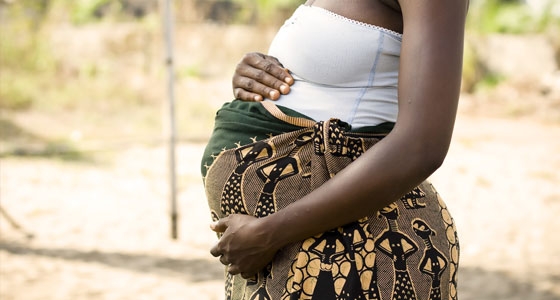Nearly Half Of All Pregnancies Unintended – UNFPA
- Home
- Nearly Half Of All Pregnancies Unintended – UNFPA

Nearly Half Of All Pregnancies Unintended – UNFPA
 Nearly half of all pregnancies, totalling 121 million each year worldwide, are unintended, according to a new report published by the UN’s sexual and reproductive health agency, the United Nations Population Fund (UNFPA).
Nearly half of all pregnancies, totalling 121 million each year worldwide, are unintended, according to a new report published by the UN’s sexual and reproductive health agency, the United Nations Population Fund (UNFPA).
“This report is a wake-up call”, said UNFPA Executive Director Natalia Kanem, adding that the “staggering number of unintended pregnancies represents a global failure to uphold women and girls’ basic human rights.”
The report titled, Seeing the Unseen: The case for action in the neglected crisis of unintended pregnancy”, warns that this human rights crisis has “profound consequences for societies, women and girls and global health”.
Abortion
The report also found that over 60 per cent of unintended pregnancies end in abortion and an estimated 45 per cent of all abortions are unsafe, accounting for five to 13 per cent of all maternal deaths recorded.
“This is also having a major impact on the planet’s ability to reach the Sustainable Development Goals (SDGs) by the 2030 target date,” the report said.
Moreover, the war in Ukraine and other conflicts and crises, are expected to drive an increase in unintended pregnancies, as access to contraception is disrupted and sexual violence increases.
“For the women affected, the most life-altering reproductive choice – whether or not to become pregnant – is no choice at all,” said the UNFPA chief.
Pushed into pregnancy
The report outlined that gender inequality and stalled development, drive high rates of unintended pregnancies.
For example, an estimated 257 million women around the world who want to avoid pregnancy are not using safe, modern methods of contraception.
And where data is available, nearly a quarter of all women, feel unable to say no to demands for sex.
A range of factors also contribute to unintended pregnancies, including a lack of sexual and reproductive healthcare; contraceptive that does not suit women’s circumstances; harmful norms surrounding women controlling their own bodies; sexual violence and reproductive coercion; and shaming in health services.
These all reflect the pressure that societies place on women and girls to become mothers.
Pregnancies surge during crises
Crisis and conflict rob women of their agency at all levels, drastically increasing the risk of unintended pregnancy.
Women often lose access to contraceptives and sexual violence increases, according to the report, which cites studies showing that over 20 per cent of refugee women and girls will face sexual violence.
“If you had 15 minutes to leave your house, what would you take? Would you grab your passport? Food? Would you remember your contraception?” asked Dr. Kanem.
“In the days, weeks and months after a crisis starts, sexual and reproductive health and protection services save lives, shield women and girls from harm and prevent unintended pregnancies. They are as vital as food, water and shelter.”
Take action
The report shows how easily the most fundamental rights of women and girls are pushed to the backburner in both times of peace and during war.
It calls on decision-makers and those in charge of health systems to help prevent unintended pregnancies by improving accessibility, acceptability and contraception choices – while also urging policymakers and community leaders to empower women and girls to make affirmative decisions about sex, contraception and motherhood.
If this is done, women and girls will be able to contribute fully to society with the tools, information and power to decide for themselves whether or not to have children.
“By putting the power to make this most fundamental decision squarely in the hands of women and girls, societies can ensure that motherhood is an aspiration and not an inevitability,” concluded the UNFPA chief.
- Share
Classic Ghana
Classic Ghana brings you into a fun world of arts, entertainment, fashion, beauty, photography, culture and all things in between. Let’s explore these together!







